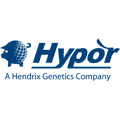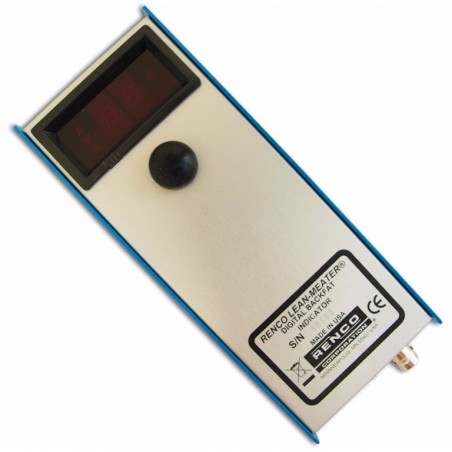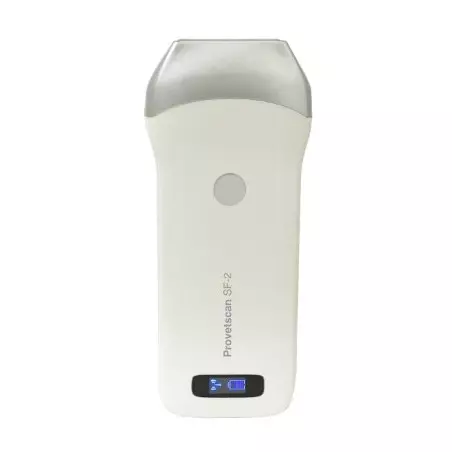 Yet with ever increasing feed costs eating into your bottom line, that’s easier said than done. In fact, it’s only practical if you can grow a bigger, leaner pig while spending less on feed. If that sounds impossible, it was…until the Hypor Magnus came along. Through its focus on efficient lean gain to heavy weights, decreased feed cost per pig and lower residual feed intake, the Hypor Magnus will help you break new ground without breaking the bank.
Yet with ever increasing feed costs eating into your bottom line, that’s easier said than done. In fact, it’s only practical if you can grow a bigger, leaner pig while spending less on feed. If that sounds impossible, it was…until the Hypor Magnus came along. Through its focus on efficient lean gain to heavy weights, decreased feed cost per pig and lower residual feed intake, the Hypor Magnus will help you break new ground without breaking the bank.
Efficient lean gain to heavy weights

“When you look at the North American industry, carcass weights have been increasing each year,” said Dr. Patrick Charagu, Senior Geneticist for Hypor.
“Our selection programs work towards maintaining lean gain longer, rather than fat gain,” said Dr. Charagu. “Even at heavier weights, the Magnus stays lean, so we can maintain a low feed conversion ratio (FCR) as animals get larger, something not all sire lines can do.” Comparing Magnus to the competition, it’s clear the Magnus brings a lower feed conversion than other sire lines.
Because we can preserve lean gain, you are spending money for growth that will be rewarded at the slaughterhouse. It amounts to a “win-win” proposition for producers, which makes switching to the Hypor Magnus a profitable move.
Decreased feed cost per pig
Since 65-70 % of an average farm’s cost of production goes to feed, making the best possible use of it isn’t just valuable; it’s vital. In trial after trial, the Hypor Magnus demonstrates a lower FCR than the competition. In feed costs alone, this could save you up to $ 3.11 USD (€ 2.61) per pig in the growth range of 25 – 130 kg (55 to 287 lb). If you multiply that by the number of pigs you feed per year, it adds up to significant savings.
“When you reduce FCR, you decrease the amount of feed needed to produce each kilogram or pound of pork,” said José Ángel Pedrido Rey, Customer Services Manager Spain and Portugal. “As a result, the Hypor Magnus achieves the same slaughter weight as the competition, and the producer spends less on feed to help it get there,” said José Ángel Pedrido Rey. “That added efficiency could also enable pigs to make better use of alternative, less expensive feed ingredients, which represents an added bonus for your business.”
Apart from benefitting the bottom line, using less feed is also a plus for the planet. By reducing the resources needed to make feed and lowering manure production and disposal, the Hypor Magnus actually reduces your environmental footprint.
Lower residual feed intake (RFI)
The main point of reducing RFI is to breed for pigs that are more efficient. Through the use of back fat and daily gain measurements, we can predict how much feed a particular pig would have needed and compare that to its actual feed intake for a given back fat depth or body weight. Pigs that have consumed less feed than what we expected are more efficient and therefore have a better RFI.
“The differences in RFI between pigs can, for example, be created by how much energy the pigs use for metabolism or activity, or how efficiently they digest the feed,” said Konrad Broekman, Senior Geneticist - Northern Europe & Asia for Hypor.
“In the Magnus, we have been selecting for feed conversion and RFI for many years to make them more efficient. Thanks to the useof hundreds of feeding stations with daily feed consumption and body weight measurements, we have increased the observations and data that we can draw from,” said Broekman. “This makes for precise prediction of which pigs are more efficient, and, in the process, increases our rate of genetic improvement.”
Total system profitability
They’re just three words, but “total system profitability” speaks volumes about Hypor’s commitment to its customers, and the Hypor Magnus lets us keep that promise.

“The price of pork is decided not by the producer, but by the market,” said José Ángel Pedrido Rey. “Since they can’t dictate revenue, producers must find ways to reduce their costs. When they do that, they improve both their own situation and that of the slaughterhouse, and that’s what TSP is all about.”
As for Hypor, we’re all about empowering our customers to be as profitable as they can, in the most sustainable way possible. At the end of the day, if you could save money while doing your part to save the planet, why wouldn’t you?
October 12 - Hypor







